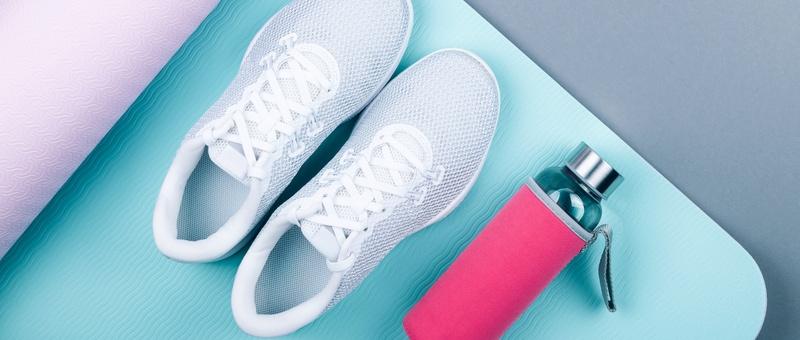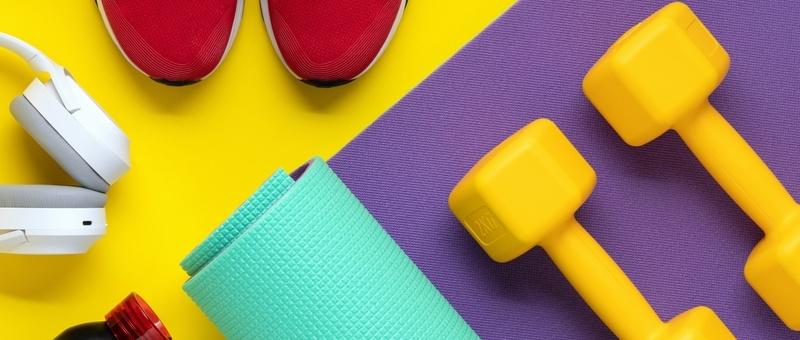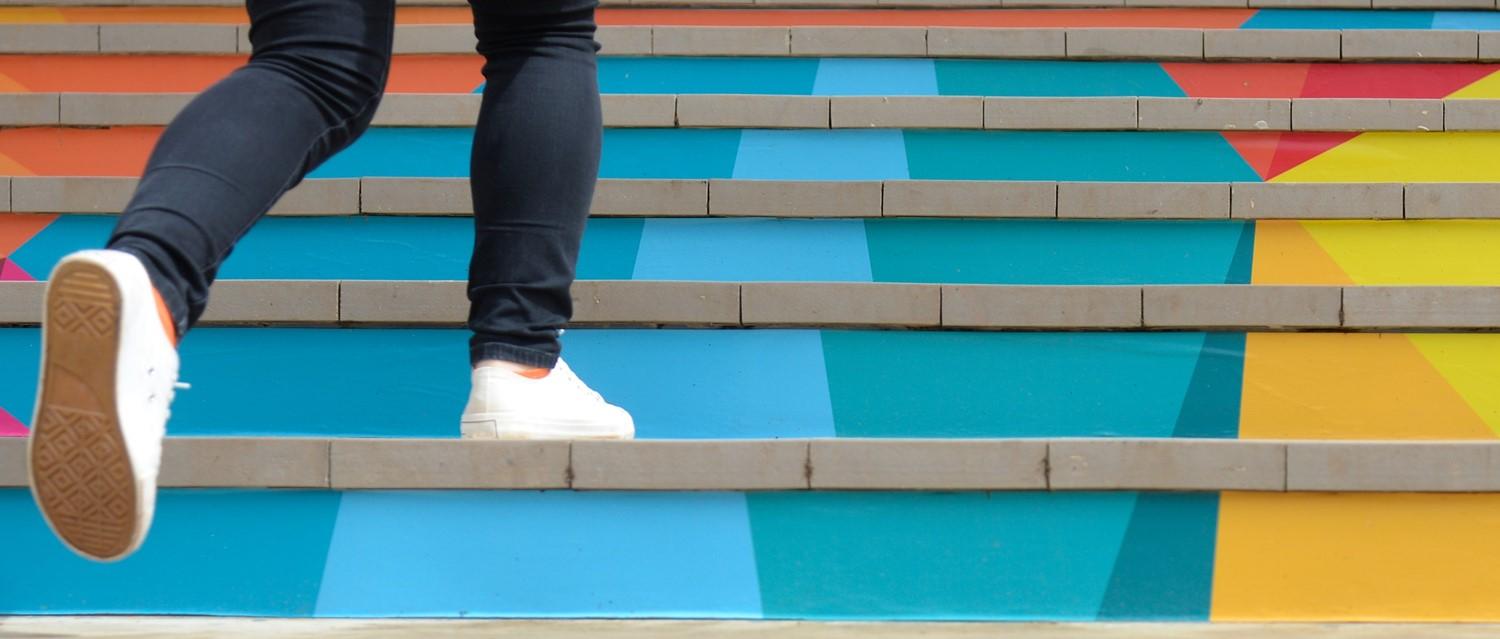
Stay fit indoors: winter workout ideas you can do at home
Peer reviewed by Dr Colin Tidy, MRCGPLast updated by Victoria RawLast updated 15 Oct 2025
Meets Patient’s editorial guidelines
- DownloadDownload
- Share
- Language
- Discussion
With winter on the way, it can be tough to stay active outdoors. If you want to avoid gym costs and exercising in wet, chilly weather, we asked a fitness expert for some simple home workouts for the colder months.
In this article:
You should aim for least 150 minutes of regular physical activity a week to keep your body healthy. While exercising in the elements can improve your mood and help reduce stress, it's not always easy to get outside when the weather turns cold and wet. Whether you're battling bad weather or facing mobility issues, we have some indoor workout tips to help you achieve your fitness goals.
Continue reading below
Bodyweight workouts
Mari-Carmen Sanchez-Morris is a former nurse, and women's health and fitness coach, on the Register of Exercise Professionals (REPS), based in Leamington-Spa, UK. She suggests adding equipment-free home workouts to your daily routine to strengthen your muscles, exercise your heart, and improve your posture, mobility and balance.
"Bodyweight workouts are a great way to exercise in the winter months," she says. "They can be done anywhere, require no gym equipment, and can boost your mood and energy levels."
Push-ups
Push-ups exercise
Lie flat on your stomach, hands down against the floor, slightly wider than your shoulders.
Push your body up with your hands, using your toes for support.
Bend your arms and lower your body until your chest almost touches the floor.
Push yourself back up to a starting position.
Squats
Squats exercise
Stand with your feet shoulder-width apart.
Bend your knees and lower your hips like you're sitting in a chair.
Keep your chest up and your knees behind your toes.
Return to a standing position.
Lunges
Lunges exercise
Stand with your feet shoulder-width apart.
Take a large step forward with one leg, with your toes pointing ahead.
Bend both knees until your back knee is almost touching the floor.
With your front heel, push upwards to return to a starting position.
Repeat with the opposite leg.
Plank exercises
Plank exercise
Start in a push-up position.
Push your body up with your hands, using your toes for support.
Make sure your body is in a straight line from head to heels.
Hold this position for 30-60 seconds.
Mountain climbers
Mountain climbers exercise
Start in a push-up position, but with your tummy raised off the floor.
Quickly bring one knee towards your chest, then switch legs quickly.
Continue alternating legs at a steady pace, as though you're running.
HIIT workouts at home
Boosting your energy and keeping your heart exercised can be challenging when you're limited to indoor spaces.
Sanchez-Morris recommends high-intensity-interval training (HIIT) as a way to combat low mood, and keep your circulation flowing.
HIIT is a time-efficient form of workout that swaps between short bursts of intense exercise and periods of rest. You can incorporate the above - or below - exercise techniques by working out for 20 seconds, resting for 10 seconds and repeating the pattern for around four minutes. After a one-minute break, repeat the process three more times. This will complete your workout for the day.
"HIIT workouts are a great way to boost endorphins and perfect for people with busy lifestyles," says Sanchez-Morris. "These quick, effective workouts can be done indoors, making them ideal for those dark, cold days when it's hard to get motivated."
Continue reading below
Household items for exercise
If you're short on exercise equipment, using everyday household items can be a creative and impactful way to work out.
Sanchez-Morris recommends using unopened food cans - such as tinned tomatoes - or water bottles instead of dumbbells for arm exercises.
Using household items for arm exercises can be effective for the following workouts.
Bicep curls
Bicep curls target the muscles in your upper arm (biceps).
Bicep curls exercise
Stand or sit with your feet shoulder-width apart.
Grip one household weight firmly in each hand with your arms by your side, and your palms facing towards you.
Bend your elbows and bring the weights up towards your shoulders.
Pause, then slowly lower your arms back down.
Shoulder presses
Shoulder presses target the muscles in your shoulders (deltoids).
Shoulder presses exercise
Stand or sit with your feet shoulder-width apart.
Grip one weight firmly in each hand, level with your chest, with your palms facing away from you.
Raise your arms upwards until they're fully extended.
Pause, then slowly lower them back to chest height.
Shoulder lateral raises
Shoulder lateral raises target the muscles on the outer part of your shoulders (side deltoids).
Shoulder lateral raises exercise
Stand or sit with your feet shoulder-width apart.
Grip one weight firmly in each hand with your palms facing towards your thighs.
Keep your arms straight and slowly lift them up to shoulder level.
Pause, then gently lower them back down to their starting position.
Triceps overhead extensions
Triceps overhead extensions target the muscles in the back of your upper arm (triceps).
Triceps overhead extensions exercise
Stand or sit with your feet shoulder-width apart.
Grip your weight firmly with both hands and slowly raise it above your head.
Bend your elbows and gently lower the weight behind your head.
Pause, then raise your arms above your head and return them to their starting position.
Stairs and chairs
If you have some, Sanchez-Morris recommends using your stairs to help exercise your heart.
"Running or walking up and down your stairs for 10-15 minutes can help release endorphins and improve circulation," she says. "Sturdy chairs are also great for step-ups, which work your legs and core, and are great for increasing your energy levels."
Transform your workout space
It can be tough to find a motivating home workout space, especially if you have a smaller home and can't use outdoor spaces.
Sanchez-Morris says: "If you feel like you need a designated exercise space, there are still ways to do this without a spare room or home gym."
She recommends investing in a yoga mat to help you create a focused workout zone, even in a small space.
"Not only does it fit away if you need space for other things during the day - such as kids’ toys - but it also creates a grounding area for you to associate with your time to exercise," she explains. "The yoga mat will also make things more comfortable for you when doing exercises such as push-ups or yoga.”
Continue reading below
Virtual fitness classes
Online fitness resources are widely available, from workout videos on social media and video platforms, to expert advice on healthcare websites. Many apps also provide short, effective workouts to do in the home, along with tips and guidance for creating a personalised fitness plan tailored to your specific goals, lifestyle, and schedule.
Sanchez-Morris adds that staying fit in the colder months has a range of physical and mental health benefits, particularly when it comes to managing seasonal affective disorder (SAD).
"The key benefits of staying active in the winter include boosting your mood and energy levels, whilst also strengthening your immune system," she says. "This is vital for helping to keep yourself healthy during cold and flu season.
"Staying active can also help improve your sleep quality, heart health, mental clarity and make you feel less guilty about indulging in the odd festive treat."
Patient picks for Exercise and physical activity

Healthy living
Weekend workouts might be enough for your health
A new study finds that getting 150 minutes of moderate-to-vigorous physical activity over 1 to 2 days is as good as spreading it over a week. This 'weekend warrior' approach to exercise can significantly improve your health and even lower your chance of dying early.
by Victoria Raw

Healthy living
Do you really need to walk 10,000 steps a day?
Are you wearing a device like a smartwatch to track your steps? If so, the goal of 10,000 steps a day may have become a bit of an obsession. But is focusing on this number the best way to improve your health? We ask an expert whether all this counting is really doing us any good.
by Lawrence Higgins
Continue reading below
Article history
The information on this page is peer reviewed by qualified clinicians.
Next review due: 15 Oct 2028
15 Oct 2025 | Latest version
1 Oct 2024 | Originally published
Authored by:
Victoria Raw

Ask, share, connect.
Browse discussions, ask questions, and share experiences across hundreds of health topics.

Feeling unwell?
Assess your symptoms online for free
Sign up to the Patient newsletter
Your weekly dose of clear, trustworthy health advice - written to help you feel informed, confident and in control.
By subscribing you accept our Privacy Policy. You can unsubscribe at any time. We never sell your data.